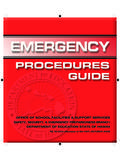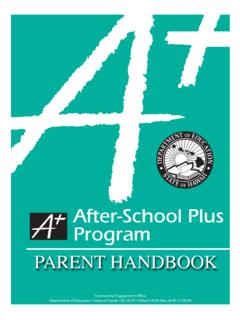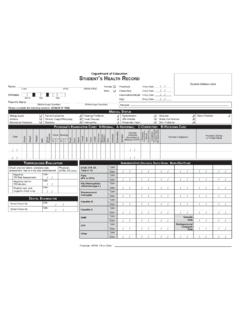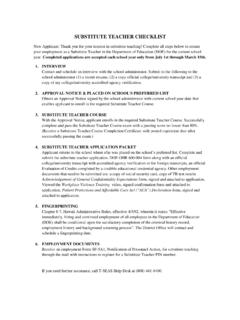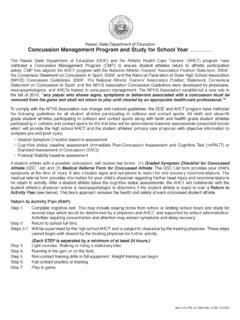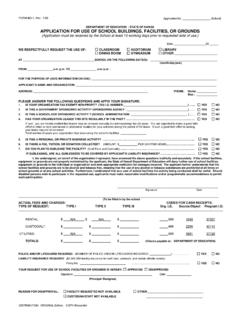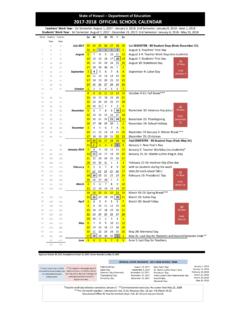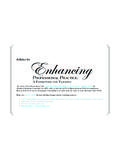Transcription of Table of Contents - Hawaii DOE
1 Table of Contents KEY PRIORITIES FOR IMPLEMENTING THE EDUCATOR EFFECTIVENESS SYSTEM 1 DESIGN VALUES 1 THE EDUCATOR EFFECTIVENESS SYSTEM IS ABOUT GROWTH 1 EES MEASURES 3 STUDENT GROWTH & LEARNING 3 TEACHER PRACTICE 3 FINAL EFFECTIVENESS RATING 4 HIGHLY EFFECTIVE 4 EFFECTIVE 4 MARGINAL 4 UNSATISFACTORY 4 TEACHER CLASSIFICATION 4 CLASSROOM TEACHERS 5 NON-CLASSROOM TEACHERS 5 TEACHERS WITH MULTIPLE ROLES 5 DIFFERENTIATING EES TO MEET TEACHERS NEEDS 5 NON-TENURED TEACHERS AND TEACHERS RATED AS LESS THAN EFFECTIVE 5 TENURED TEACHERS WHO RECEIVED A RATING OF EFFECTIVE OR BETTER IN THE PRIOR YEAR S EVALUATION 6 PROFESSIONAL DEVELOPMENT PLANS (PDP) 6 ANNUAL COMPREHENSIVE EVALUATIONS FOR SY2018-2019 7 ORIENTATION TRAINING FOR ALL TEACHERS 8 TEACHERS NEW TO EES- OVERVIEW TRAINING 8 EVALUATION CONFERENCES 9 BEGINNING CONFERENCE 9 MID-YEAR CONFERENCE (OPTIONAL) 9 ENDING CONFERENCE 9 IMPLEMENTATION TIMELINES 10 SINGLE TRACK SCHOOLS IMPLEMENTATION TIMELINES 10 SUPPORTING TEACHERS WITH DOCUMENTED DEFICIENCIES 13 TEACHER PRACTICE MEASURES 15 CORE PROFESSIONALISM 15 PROCESS, REQUIREMENTS* & BEST PRACTICES FOR: CORE PROFESSIONALISM (CP) 17 RATING CALCULATION FOR CORE PROFESSIONALISM 18 OBSERVATIONS 19 PROCESS, REQUIREMENTS* & BEST PRACTICES FOR: FORMAL OBSERVATIONS 21 RATING CALCULATION FOR OBSERVATIONS 23 WORKING PORTFOLIO (WP) 23 PROCESS, REQUIREMENTS* & BEST PRACTICES FOR.
2 WORKING PORTFOLIOS (WP) 25 RATING CALCULATION FOR WORKING PORTFOLIO 26 STUDENT GROWTH AND LEARNING MEASURES 27 STUDENT LEARNING OBJECTIVE (SLO) AND 27 SCHOOL OR SYSTEM IMPROVEMENT OBJECTIVE (SSIO) 27 THE FOUR COMPONENTS FOR SLOS AND SSIOS 29 PROCESS, REQUIREMENTS*& BEST PRACTICES FOR: SLO 30 PROCESS, REQUIREMENTS* & BEST PRACTICES FOR: SSIO 33 RATING CALCULATION FOR SLOS AND SSIOS 36 FINAL EFFECTIVENESS RATING 38 EXCEPTIONS TO THE TEACHER PRACTICE WEIGHTS 39 IMPACT OF FINAL RATING ON EMPLOYMENT ACTION(S) 39 APPENDIX A: KEY TERMS 40 APPENDIX B: SUPPORTING RESOURCES 42 APPENDIX C: ROSTER VERIFICATION (RV) CALENDARS 44 2018-2019 TRIPOD STUDENT PERCEPTION SURVEY RV & IMPLEMENTATION CALENDAR 44 2018-2019 HGM RV CALENDAR 44 APPENDIX D: MULTI-TRACK SCHOOLS IMPLEMENTATION TIMELINES 45 YELLOW TRACK SCHOOLS IMPLEMENTATION TIMELINE 45 RED TRACK SCHOOLS IMPLEMENTATION TIMELINE 48 GREEN TRACK SCHOOLS IMPLEMENTATION TIMELINE 51 BLUE TRACK SCHOOLS IMPLEMENTATION TIMELINES 54 EES Resources Online The Hawaii State Department of Education (HIDOE) has a public webpage, , where teachers, evaluators and the public can access information about the EES.
3 More detailed information, resources and relevant documents and forms can be found on the HIDOE Intranet. The Intranet is only accessible by employees via their authenticated username and password. To access many of the links to these resources that are embedded in the EES Manual, employees will need to log in. First-time users of the Intranet can set their password via our Self-Service Password Manager; instructions available here: Employees who need further assistance with their login should contact the IT Help Desk at 564-6000, or via HATS at | 1 Key Priorities for Implementing the Educator Effectiveness System The Educator Effectiveness System (EES) is a comprehensive process to evaluate teachers performance in the Hawaii State Department of Education (Department) to determine how to best target supports for teacher growth and improvement.
4 The Department developed and refined the EES over the course of a one-year planning period and two-year pilot. The system has been further refined based on data and input collected from stakeholders during statewide implementation starting in School Year (SY) 2013- 2014 and periodic refinement through SY2017-2018. Driven by the Department s beliefs about the value and importance of continuous improvement, the EES provides teachers with constructive feedback and structures of support throughout the school year. Design Values Nothing matters more than effective teachers Research has shown that highly effective teachers have a greater impact on student achievement than any other factor. The EES aims to improve student and system outcomes by providing all teachers with the support they need to succeed.
5 When teachers excel, students will thrive. Teachers deserve to be treated like professionals Professionals require evaluation systems that provide fair, transparent, equitable, and comprehensive feedback about their performance. The EES uses multiple measures to give teachers the best information available and guard against misguided judgments. In order to support and retain effective teachers, the Department needs to recognize excellence. The EES introduces a performance rating system that enhances effective instructional practices. The Educator Effectiveness System is about growth To reach its goals, the Department must invest in its teachers. The EES provides tools and data to help teachers become more effective. The EES supports teacher development by: Clarifying Expectations To be effective, teachers and administrators must have a clear understanding of what constitutes successful teaching/system improvement.
6 The multiple EES measures and performance rubrics will identify areas of strength and improvement for our teachers. Page | 2 Providing Feedback The EES provides sources of regular feedback to teachers. Feedback is essential to learning and improvement. Under the EES, teachers receive feedback and opportunities for collegial discussion about their data multiple times throughout the school year. Driving Professional Development The EES data will help evaluators determine what support teachers need, the best way to allocate resources, and what instructional approaches/structures work best. Providing specific feedback to teachers allows them to set goals and seek professional development aligned with their needs. Valuing Collaboration Collaboration among teachers is critical.
7 It builds common expectations of student and system outcomes and allows teachers to share best practices. The EES helps facilitate collaboration within schools and between schools by providing a common language and data set to use when talking about teacher practice, student achievement, school improvement, and system change. The Department encourages leveraging existing cooperative structures like data teams, professional learning communities, departments, instructional leadership teams, and grade level teams to help teachers interpret EES. Page | 3 EES Measures The EES measures are rooted in the Hawaii Teacher Performance Standards and comply with Hawaii State Board of Education (Board) Policy Board policy requires the evaluation system to have two major components each of which counts towards at least 40 percent of the overall rating.
8 The EES consists of Student Growth and Learning measures for half of a teacher s annual effectiveness rating, with Teacher Practice accounting for the other half. EES components used to comprise each measure differ based on each teacher s job classification since different data links to different teaching assignments. Teachers cannot opt out of EES. It is a requirement of all teachers, based on the Bargaining Unit 5 (BU5) contract. All BU5 teachers shall be evaluated, irrespective of future plans the teacher may have (separation, retirement, leave, etc). Student Growth & Learning Teacher Practice Student Learning Objective (SLO) or School System Improvement Objective (SSIO) Core Professionalism (CP) (including reflection on Tripod Student Survey & Hawaii Growth Model (HGM) - Median Growth Percentile (MGP) results) Observation(s) or Working Portfolio (WP) 1 SLO or SSIOCore ProfessionalismObservation or Working PortfolioPage | 4 Final Effectiveness Rating The combination of measures will result in an annual final effectiveness rating of Highly Effective, Effective, Marginal, or Unsatisfactory.
9 Highly Effective Demonstrates excellence in teacher practice and student/system outcomes that exceed expectations. Effective Demonstrates effective teacher practice and student/system outcomes that meet expectations. Marginal Needs improvement to demonstrate effective teacher practice and/or expected student/system outcomes. Unsatisfactory Does not show evidence of effective teacher practice or expected student/system outcomes. The final effectiveness rating represents the combined performance on multiple measures. Individual component ratings do not equate to the final effectiveness rating. Individual component ratings may use different terminology ( , Distinguished, Proficient, Basic, etc.) because they are indicators of specific levels of performance on unique rubrics.
10 The Professional Development Educate, Empower, Excel (PDE3) system, the Department s online platform, will be used to document all evaluation dates, component ratings, and generate a final effectiveness rating. Teacher Classification The EES applies to all BU5 employees within the Department. BU5 employees fall into two broad categories: 1) Classroom Teachers (CT) and 2) Non-Classroom Teachers (NCT). PDE3 will apply data to teachers depending upon the specified classification of either CT or NCT. If teachers switch roles mid-year, a conference should be initiated by the evaluator to discuss the implications on the teacher s evaluation. The Summary of Conference (SOC) form may be used to document this meeting. Page | 5 Classroom Teachers CTs are BU5 employees who plan, deliver, and assess instruction for students.
